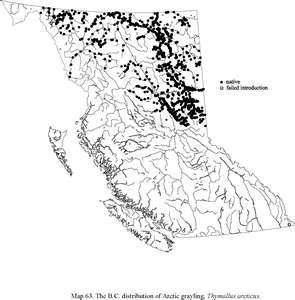Dorsal spines (total): 0; Dorsal soft rays (total): 17 - 25; Anal spines: 0; Anal soft rays: 11 - 15; Vertebrae: 58 - 62. Distinguished by its greatly enlarged dorsal fin and its small mouth, which has fine teeth on both jaws (Ref. 27547). Dorsal greatly enlarged in adults (especially males), reaching adipose fin when depressed, but is shorter in females; pelvic fins rather long, reach anal fin in adult males, but not in females; lower lobe of caudal often longer than upper (Ref. 27547). A strikingly colored fish, the dorsal surface is dark purple, or blue black to blue gray, the sides gray to dark blue with pinkish iridescence, the ventral surface gray to white (Ref. 1998). Scattered dark spots on sides, these being more numerous on the young; a dark longitudinal stripe along lower sides between pectoral and pelvic fins; dorsal fin dark with narrow purple edge (rows of reddish to orange or purple to green spots on body of fin); pelvic fins dark with irregular diagonal orange-yellow stripes; adipose, dorsal, anal, caudal and pectorals dusky to dark (Ref. 27547).
Source: FishBase. McClanes, A.J. (ed.) 1974 Field guide to freshwater fishes of North America. Holt, Rinehart and Winston, New York. 212 p.
